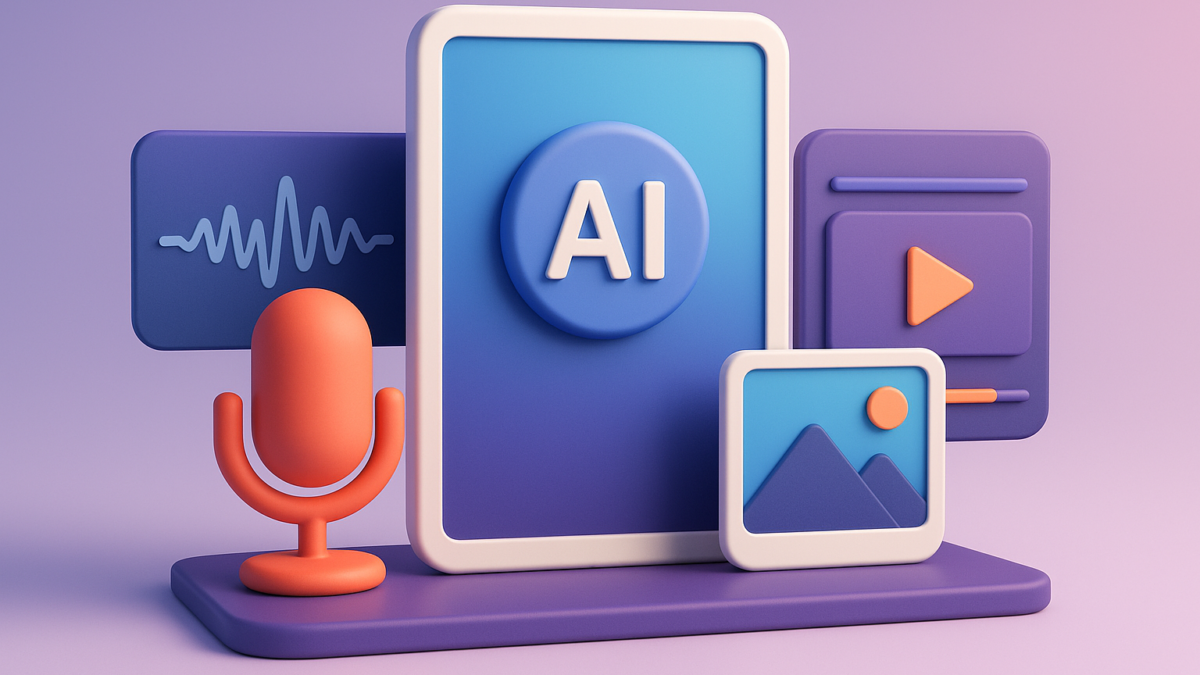Multimodal AI: Beyond Text — The Future of Voice, Image & Video Integration in 2025
Table of Contents
When ChatGPT first appeared, it wowed the world with text-based intelligence. Fast-forward to 2025, and we’ve entered a new era: multimodal AI. These models don’t just process words—they understand and generate voice, images, video, and even sensor data, combining them into richer insights.
This leap has massive implications for marketing, healthcare, customer experience, and enterprise productivity. Instead of siloed tools for different formats, multimodal AI creates a unified intelligence layer that can reason across media.
What Is Multimodal AI?
Multimodal AI refers to systems that can simultaneously interpret and generate information across multiple data types:
- Text (documents, chats, code)
- Speech/Voice (conversations, tone analysis)
- Images (photos, diagrams, medical scans)
- Video (real-time feeds, gesture recognition)
- Other sensory data (IoT signals, biometric inputs)
By integrating these streams, multimodal AI delivers context-aware insights far more powerful than single-mode systems.
Real-World Applications in 2025
1. Healthcare & Diagnostics
AI can read a patient’s medical scans, cross-reference research papers, and transcribe doctor notes in real time—then generate a unified diagnosis recommendation.
2. Marketing & Customer Experience
Marketers use multimodal AI to analyze voice tone in calls, facial reactions in video ads, and social media text comments, creating a 360° view of consumer sentiment.
3. Education & Training
Imagine an AI tutor that reads a student’s essay (text), listens to their presentation (voice), and assesses their engagement (video). Multimodal AI makes personalized learning a reality.
4. Security & Surveillance
AI systems integrate facial recognition (images), suspicious behavior (video), and voice patterns (audio) to flag risks in real time.
5. Creative Industries
From generating music synced with video, to creating AI-driven film storyboards, multimodal tools are expanding creative possibilities.
The Technology Behind Multimodal AI
Advances enabling multimodal breakthroughs include:
- Transformer architectures (like GPT-4 Turbo, Gemini, and Claude Opus).
- Custom silicon optimized for handling parallel multimodal streams.
- Edge computing to process data locally in real time, especially for AR/VR and IoT devices.
Benefits for Enterprises
✔ Richer Insights: Understand customer behavior across touchpoints.
✔ Faster Decisions: Real-time analysis of complex, multi-format datasets.
✔ Personalization: Adaptive recommendations that use text, visuals, and context simultaneously.
✔ Efficiency: Replaces siloed tools with unified AI-driven workflows.
Challenges & Concerns
Data Privacy: Integrating text, video, and audio data raises compliance risks (GDPR, HIPAA).
Bias & Fairness: Multimodal models can amplify biases across multiple modalities if not trained ethically.
Compute Intensity: Running multimodal AI requires significant infrastructure—pushing enterprises to adopt cloud or custom silicon solutions.
The Future: Multimodal + Immersive AI
In 2025, multimodal AI is already powering AR/VR applications, with real-time integration of vision, sound, and gesture. Looking ahead:
- Immersive AI assistants will interact naturally in mixed reality environments.
- Smart enterprises will use multimodal AI for decision intelligence, merging data across departments.
- Consumers will expect AI that communicates across media, not just text chat.
Connecting the Dots
Just as Cluely: The Invisible AI That Thinks for You in Every Meeting brings AI reasoning into workplace conversations, multimodal AI brings contextual awareness across all forms of input. Both trends signal the same future: AI that doesn’t just assist—it understands.
Conclusion: Beyond Words
Text-based AI was the beginning. In 2025, multimodal AI is enabling organizations to analyze, predict, and create across formats bringing us closer to truly human-like digital intelligence.
For enterprises, adopting multimodal systems isn’t optional—it’s the key to staying competitive in a data-rich, fast-moving world.
CTA
Want to explore how AI, Martech, and future tech are converging in 2025?
Subscribe to iTMunch for weekly deep dives into the innovations shaping tomorrow’s enterprises.
You May Also Like: Whitepapers vs. Ebooks vs. Case Studies: Which Content Format Wins in B2B Marketing





